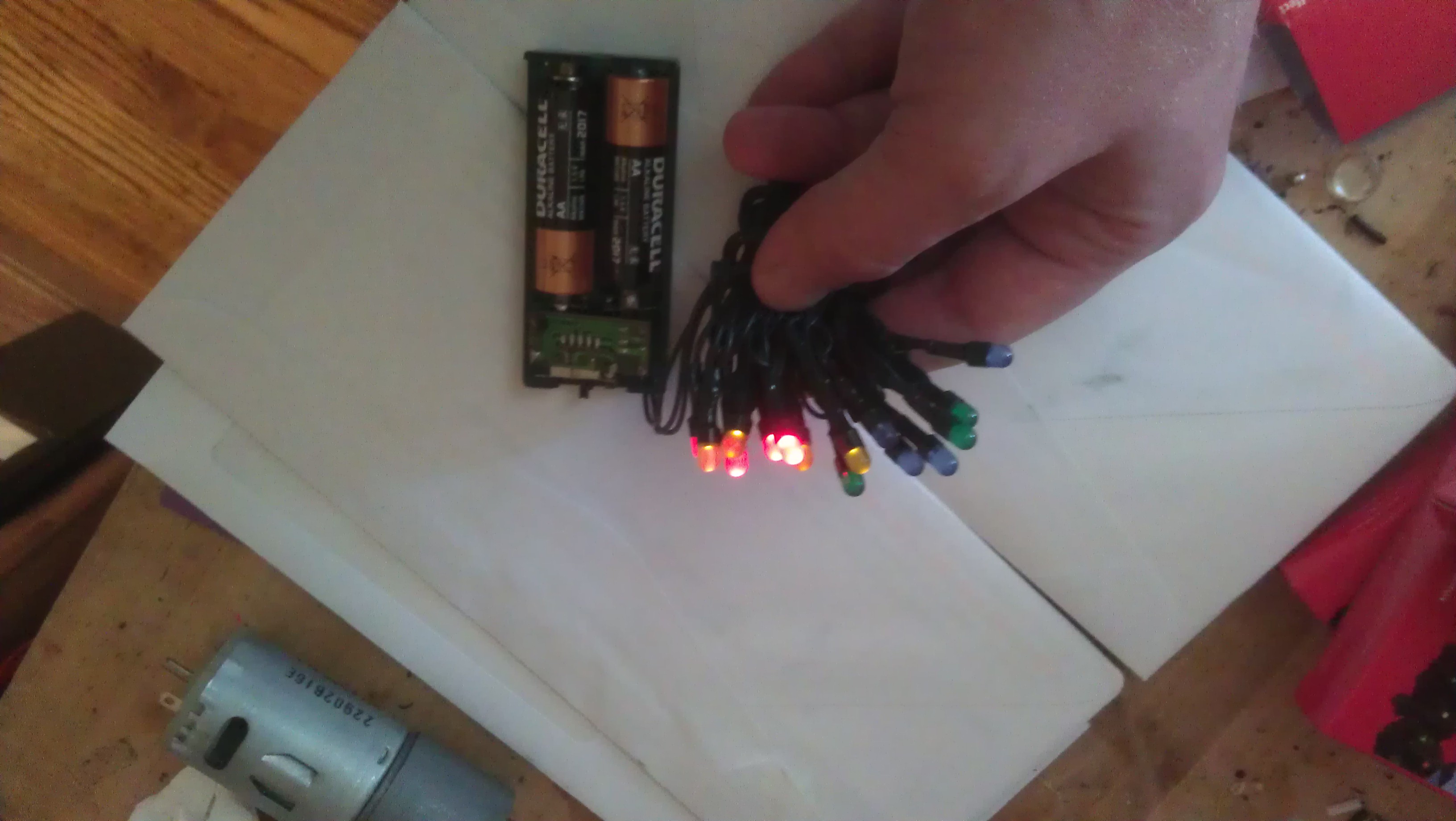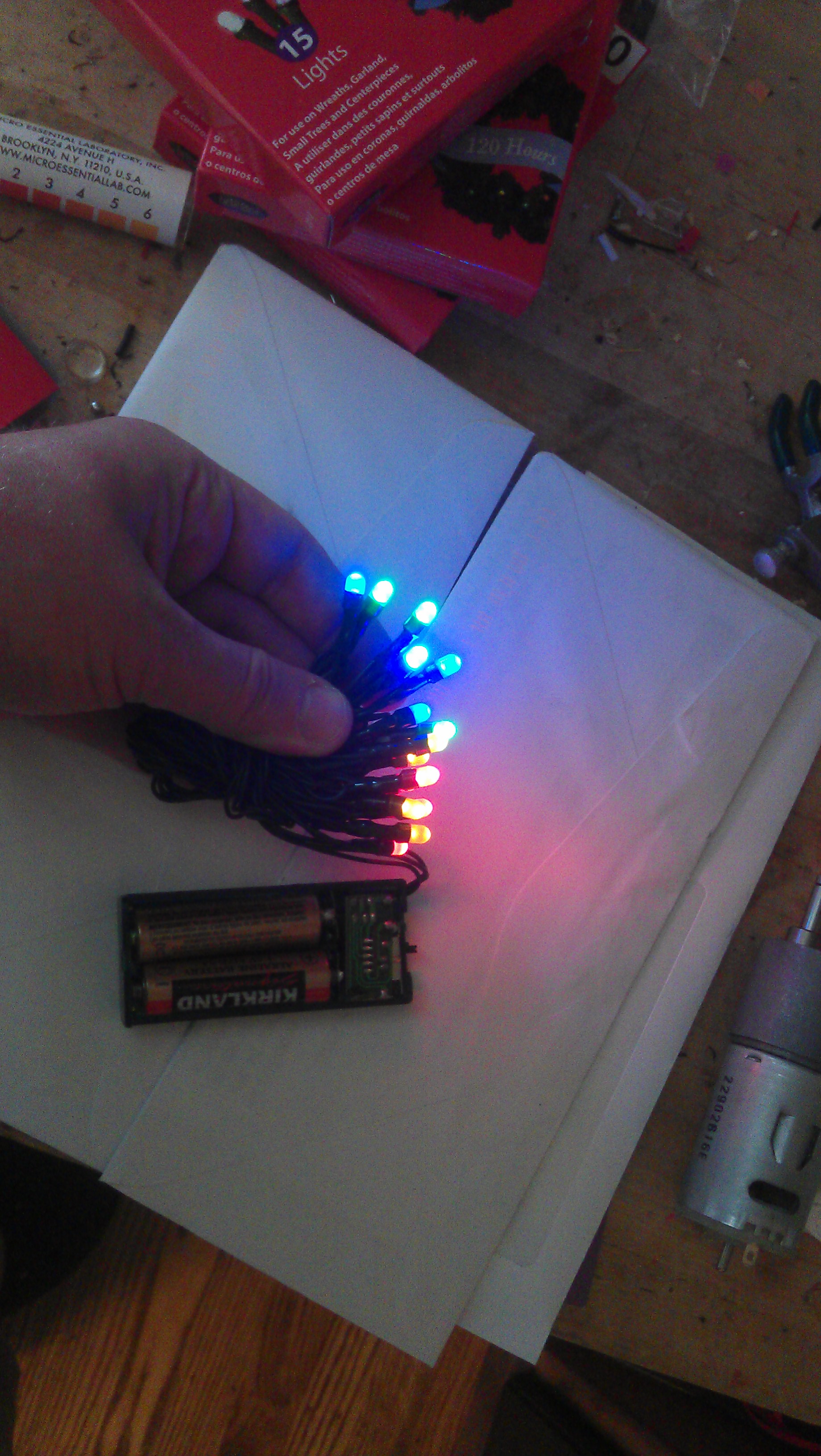LEDs Demonstrate Quantum Mechanics
 Thursday, August 8, 2013 at 11:18PM
Thursday, August 8, 2013 at 11:18PM 
This is a strip of battery-powered LED Christmas Lights which are usually available at Walgreens at Christmas. I got them out to work on a project, turned them on, and was struck by something odd. I used to buy these by the bucket at the low price of three packs for $10 because it was a cheap way to get fairly bright LEDs that were already shrinkwrapped and easy to use. They've changed the lens design to spread out the light more, but they can still be useful. However, that's not what I'm interested in now.
Notice that the red LEDs are really bright, the yellows are dim and the rest are off. This suprised me and made be take a moment to consider what was going on and come up with an explanation.
A clue is that the batteries are mostly used up and aren't able to provide as much voltage as when they were fresh.
LEDs are weird beasts. Like filament light bulbs, if electrons get pushed through them, they start to glow, but unlike filament light bulbs, each color takes a minimum voltage before it will glow. Less than that voltage, you get nothing.
You might wonder why that is. Alhtough the story is really more complicated than this, essentially the LED turns the energy in one of those moving electrons into a bit of light. The energy that an electron has is related to its voltage.
And the energy of light is related to its frequency. The red part of the spectrum has the lowest frequencies and the violet part of the spectrum has the highest frequencies.
So low voltage electrons have low energy and can only make low energy light which is light with low frequencies which is red light. It takes higher energy electrons to make green and blue light. Since there aren't any high energy electrons, the green and blue LEDs can't make any light.
Perhaps you could put two electrons together to make blue light? That doesn't work in most cases, though. Quantum means more or less "the smallest possible amount."
With fresh batteries, everything started to work as you'd expect.

 electricity in
electricity in  Demos
Demos 
